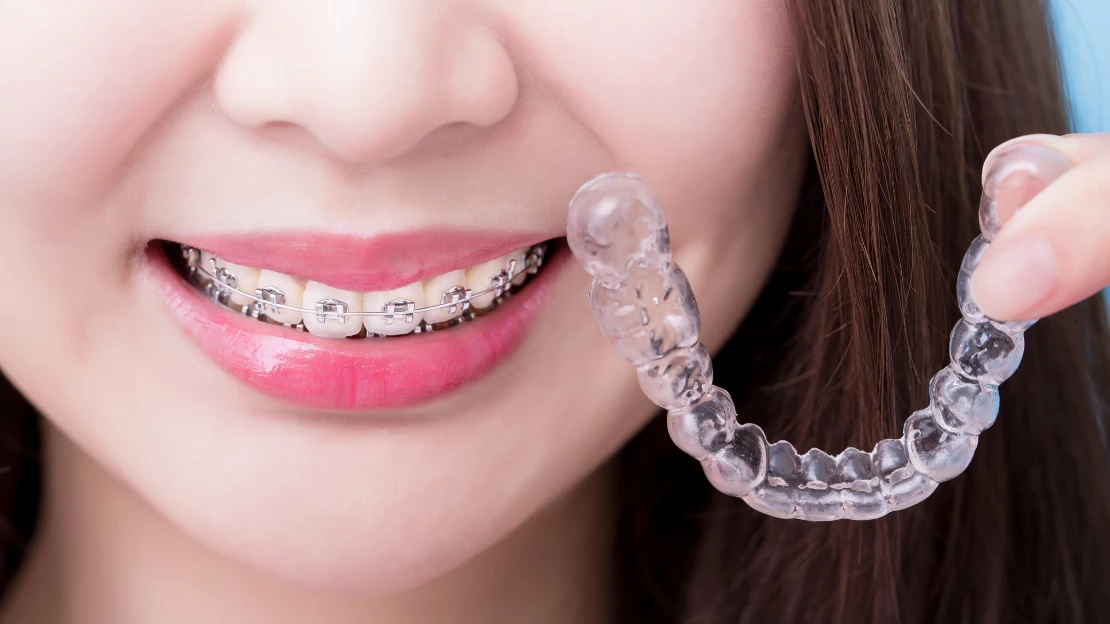
Orthodontics has come a long way in improving the way we straighten teeth and correct bites. One of the most significant advances in orthodontic treatment has been the evolution of braces from metal to virtually invisible options. Let's take a look at how braces have transformed over the years and how orthodontists have adapted to meet the changing needs and preferences of their patients.
Traditional metal braces have been around for decades and have been a staple in orthodontic treatment. Made of high-grade stainless steel, metal braces consist of brackets that are attached to each tooth and connected by wires. While effective in straightening teeth and correcting bites, metal braces are visible and can be uncomfortable for some patients. However, they remain a popular choice for those looking for cost-effective and reliable treatment options.
As technology and materials have advanced, orthodontists have developed new alternatives to traditional metal braces. Ceramic braces are one such option that has gained popularity in recent years. Made of clear or tooth-colored materials, ceramic braces blend in with the natural color of teeth, making them less noticeable than traditional metal braces. While they are more aesthetically pleasing, ceramic braces can be more fragile and are slightly more expensive than their metal counterparts.
Another breakthrough in orthodontic treatment is the development of lingual braces. Unlike traditional braces that are attached to the front of the teeth, lingual braces are placed on the back of the teeth, making them virtually invisible to others. This hidden treatment option is favored by patients who are looking for a discreet way to straighten their teeth. Lingual braces are custom-made for each patient, making them a more comfortable and personalized treatment option.
For those looking for the ultimate in invisible orthodontic treatment, clear aligners have become a popular choice. Clear aligners, such as Invisalign, are custom-made, removable trays that are worn over the teeth to gradually move them into the desired position. Clear aligners are virtually invisible, making them a popular choice for adults and teens who want a more discreet way to straighten their teeth. They are also removable, allowing patients to eat and brush their teeth without any restrictions.
Orthodontists have embraced these advancements in braces technology, offering their patients a wide range of treatment options to suit their individual needs and preferences. From metal braces to clear aligners, orthodontists are able to provide effective and customized treatment plans that can achieve beautiful and lasting results. By staying up-to-date on the latest advancements in orthodontic technology, orthodontists are able to provide their patients with the best possible care and outcomes.
While the evolution of braces has undoubtedly made orthodontic treatment more comfortable and convenient for patients, it has also made it more complex for orthodontists. With a variety of treatment options available, orthodontists must stay informed and skilled in order to provide the best possible care for their patients. From traditional metal braces to invisible aligners, orthodontists are constantly adapting to meet the changing needs and preferences of their patients.
Overall, the evolution of braces by orthodontists has revolutionized the field of orthodontics, making treatment more accessible, comfortable, and effective than ever before. Whether you choose traditional metal braces, ceramic braces, lingual braces, or clear aligners, orthodontists are able to provide a wide range of treatment options to help you achieve a straighter and healthier smile. The future of orthodontics is bright, with continued advancements in technology and materials set to further improve the way we straighten teeth and correct bites.